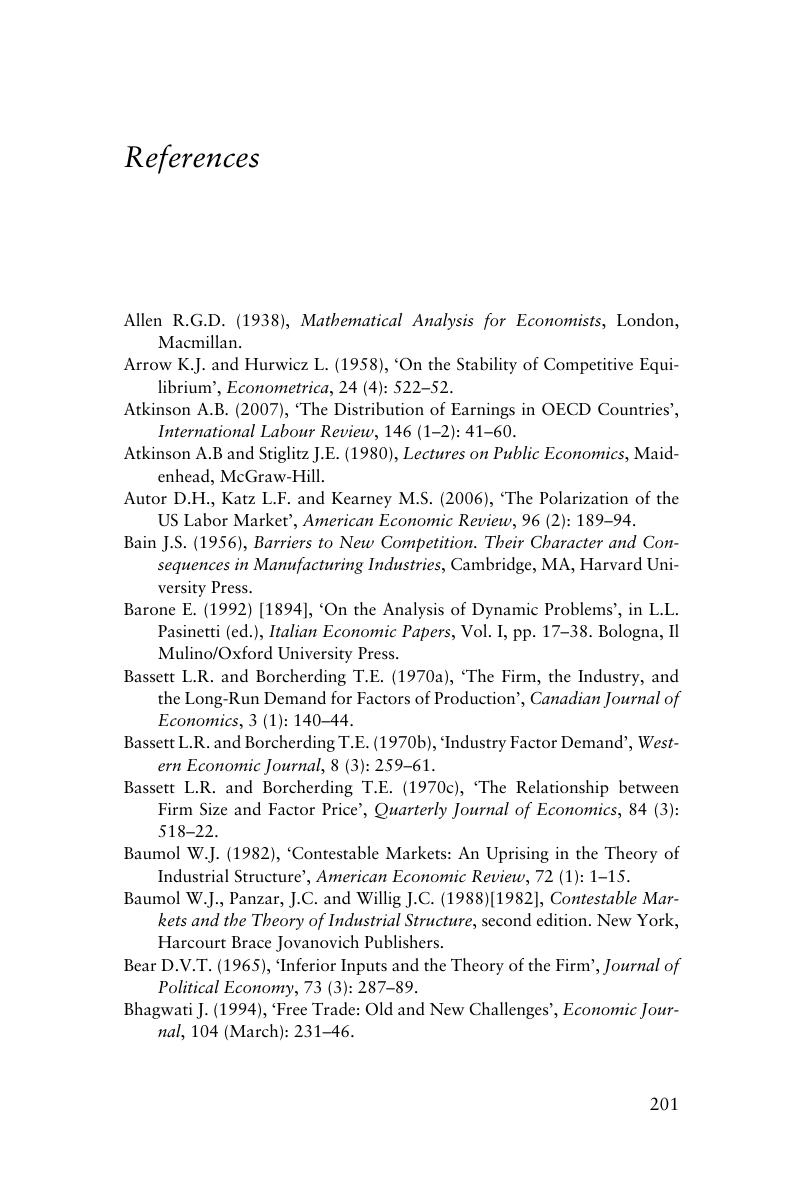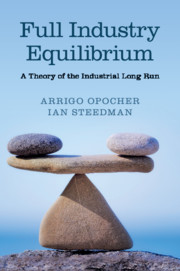Book contents
- Full Industry Equilibrium
- Full Industry Equilibrium
- Copyright page
- Dedication
- Contents
- Figures
- Tables
- Preface
- Introduction
- 1 Taking seriously the tendency to zero net profits
- 2 An isolated industry
- 3* Multiproduct firms
- 4 Interdependent industries
- 5 Industry-level input use. Some aftershocks from capital theory
- 6 The ‘autonomous’ components of input prices
- 7 The effects of taxation
- 8 Productivity increase
- 9 Full industry equilibrium in retrospect
- 10 Conclusions
- References
- Index
- References
References
Published online by Cambridge University Press: 05 June 2015
- Full Industry Equilibrium
- Full Industry Equilibrium
- Copyright page
- Dedication
- Contents
- Figures
- Tables
- Preface
- Introduction
- 1 Taking seriously the tendency to zero net profits
- 2 An isolated industry
- 3* Multiproduct firms
- 4 Interdependent industries
- 5 Industry-level input use. Some aftershocks from capital theory
- 6 The ‘autonomous’ components of input prices
- 7 The effects of taxation
- 8 Productivity increase
- 9 Full industry equilibrium in retrospect
- 10 Conclusions
- References
- Index
- References
Summary

- Type
- Chapter
- Information
- Full Industry EquilibriumA Theory of the Industrial Long Run, pp. 201 - 208Publisher: Cambridge University PressPrint publication year: 2015



